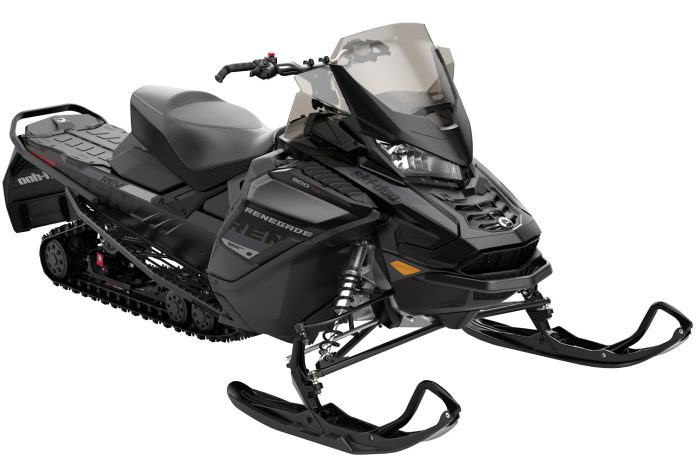This season Rotax pulled the sheets off a completely new ACE 900 equipped with a Rotax-built intercooled turbocharger producing 150-horsepower. Clearly this new engine is what a legion of 1200 Rotax diehards have been waiting for.
Ski-Doo has made it clear the ACE Turbo is not in competition with Yamaha’s turbo. It is the next step in performance for the 1200 Rotax buyer. To this end, we would agree, the 150-hp ACE Turbo is a perfect fit. However, inevitable comparisons will multiply this winter.
To get to the 150-horsepower level from an engine producing arguably 95-hp without a hair dryer stuck in its throat, requires more than subtle tweaking. The Turbo gets bigger, stronger rods, stronger pistons and different valve timing from its twin overhead cams.
The turbocharger itself is mounted close – we mean really close – to the exhaust ports. In fact, the turbo unit is actually an integral part of the exhaust manifold. This design trick is targeted at reducing lag and keeps a highly pressurized charge in the intake runner that enters the intercooler then encircles the engine connecting to the intake plenum on its back side.
Here are some interesting stats for you to digest ands don’t take these numbers as boilerplate. Honestly, we wish we could give you (like we did in the early 2000s) the actual wet weight of each model but apparently we are not able to handle such revelations.
Here’s what we’ve discerned by deductive reasoning and common sense calculations: An 1170cc 4-TEC triple weighs about 20 pounds more than the 900 ACE with no turbo. We think a 900 Turbo is about 26 pounds heavier than an ACE 900 and about 44 pounds heavier than a 600R E-TEC.
If you’re comparing the new Turbo to its most likely rival in the Ski-Doo brochure, the 850 E-TEC, it would appear to be 37 pounds heavier. If you go one step further and do some rudimentary power-to-weight calculations, an 850 E-TEC is hands down, running away king-of-the-castle in terms of real world power and acceleration down the lake.
If you’re a loyal 1200 4-TEC owner looking for the next step, get on down to your Ski-Doo store; you won’t be disappointed. The Turbo 900 delivers a healthy blast of acceleration and a formidable run past the C-note on Kevlar Lake. The spread of power is wide and trailable.
As with most 4-stroke sleds, the Turbo stays shifted out when accelerated hard. This desirable trait has to do with the inherent torque 4-strokes – in particular turbocharged ones – produce. Also, there is simply no undervaluing the effect of the low-friction pDrive roller primary in play here.
The Turbo ACE has but one foible: The electronic drive by wire (DBW) throttle carried over from later model 4-TECs. This multi-mode throttle is not up to the performance standards we’ve come to expect from the number one selling snowmobile OEM. It is laggy, not at all intuitive and feels less than connected to the engine.
We’re satisfied the engine does not produce any turbo lag, however there is “throttle lag” in the DBW system. Trust us, select “Sport Mode” every time you ride the Turbo. Come to think of it, why would anyone buy a 150-hp snowmobile and want to ride it in “Eco Mode”? Can you acclimatize to this less-than-perfect throttle? Sure. The question is this: Should you have to?
Comparisons to the Yamaha turbo are, as we said, inevitable. The reality is this: 150-hp isn’t 180 and don’t expect it to be. Having said that, keep in mind this engine, in almost identical form, is tucked in the Can-Am Maverick X3 SxS producing a claimed 173-hp. We find it hard to believe savvy BRP snowmobile dealers haven’t figured out a way to tweak the ECU, wastegate and/or both on the new Turbo to deliver more power.
We have to conclude, if the 900 Turbo can reliably deliver another 25 horsepower in a side-x-side then it won’t be long until the snowmobile version gets a tune up.








